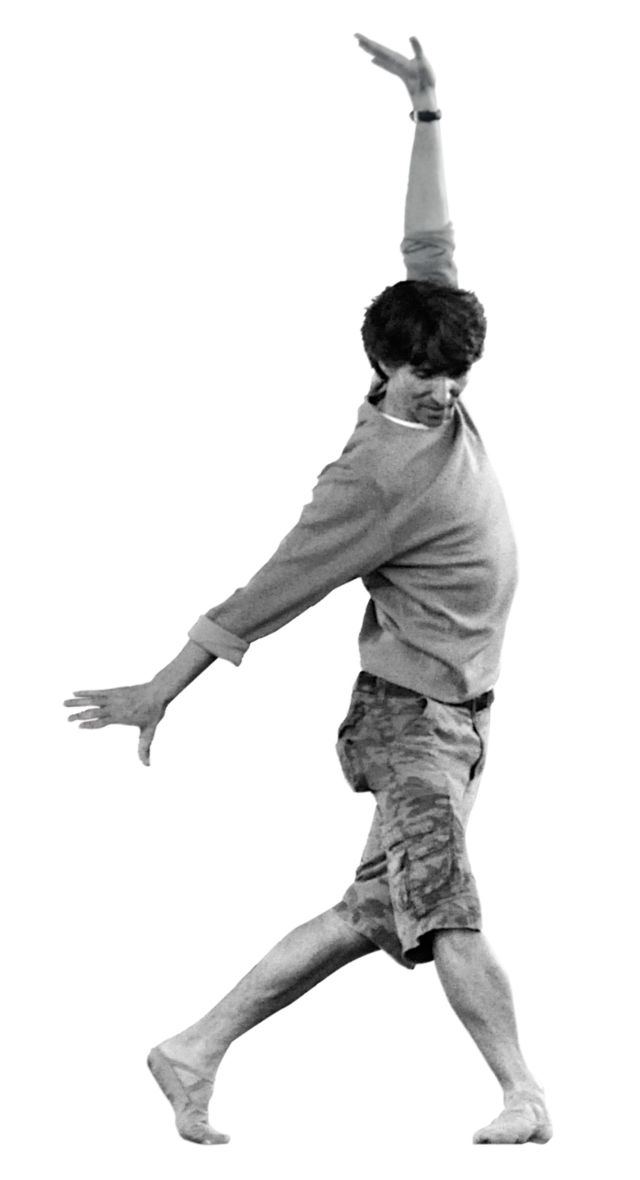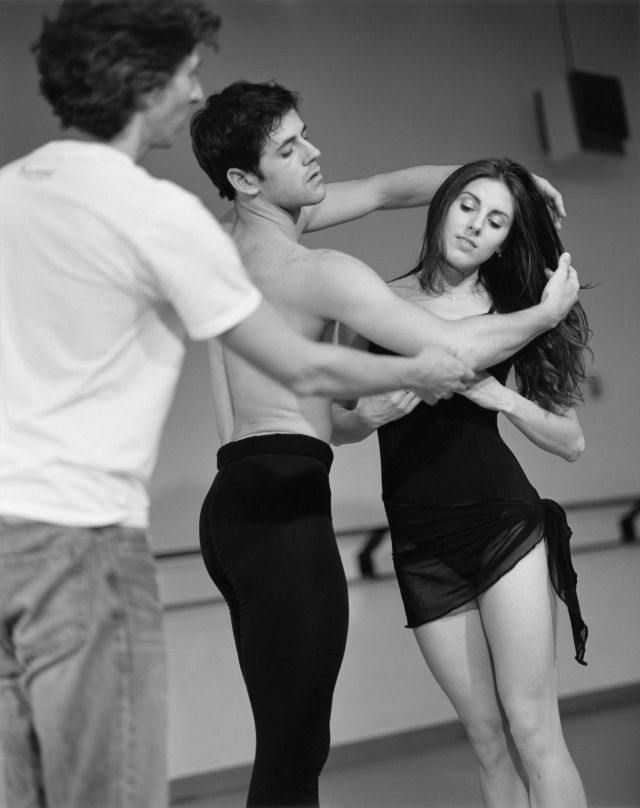Gotta Dance

Artistic Director Damian Woetzel rehearses George Balanchine’s Apollo at the Gerald R. Ford Amphitheater during the 2009 Vail International Dance Festival. Choreography © The George Balanchine Trust.
Image: Erin Baiano
Damian Woetzel’s final performance as a principal dancer with the New York City Ballet two years ago brought a 10-minute ovation. But the mountain of flowers thrown onto the stage did not mark the farewell to a career; instead, it marked a transitional moment in the life of an artist who wants to explore how dance should progress in the 21st century. »
“An overriding theme going through all the things I’m working on now has to do with how the arts fit into society,” says Woetzel, whose current work includes the directorship of the Vail International Dance Festival. “It’s about asking, ‘What is a new work? Will it be appreciated now? How does it relate to music, and how does it relate to people’s lives?’ So much of the arts in America becomes too much about how we do it, how we raise the money to do it or how we get the place where we’re doing it. My feeling is that if we do it well, the rest falls into place in many ways.”
Using a number of assets from his own diverse past, including a wealth of contacts and a master’s degree in public administration from Harvard’s Kennedy School of Government, Woetzel is a driving force behind some exciting developments in today’s international dance scene. Last fall he helped create the Jerome Robbins Foundation’s New Essential Works Program, which supports choreographers and dance companies through grants. He founded the Studio 5 series of discussions and demonstrations at New York’s City Center and works with the World Science Festival in New York, exploring the intersection of the arts and science. And in November 2009, President Obama appointed him to the President’s Committee on the Arts and the Humanities.
Luckily for enthusiastic local audiences, Woetzel informs the Vail festival with perspectives he encounters through all of his work—and the festival’s success attests to the power of these ideas. During the four years he has been director of the Vail festival, ticket sales have climbed steadily, even through economic conditions that have taken a toll on most other cultural programs. Last season set new records for the Vail festival, with out-of-state ticket buyers outnumbering locals two to one.
This year’s festival starts its two-week run with Savion Glover on July 27, while the New York Philharmonic Orchestra is still in town for its summer residency. “I think it mixes kind of wonderfully,” Woetzel says of the dance festival’s opening night. “We are going to have this collaboration between Savion Glover and the jazz master Eddie Palmieri. Having them together on a stage, this interchange ... it’s going to be crazy. It’s all about today. This is the moment! It’s a thrill to be able to foster that sort of immediacy.”
Such appreciation of the juxtaposition of tap dancing and the New York Philharmonic is an indication of Woetzel’s overall approach. Context matters. He takes advantage of collaborations and other performance paradigms that can add vitality and relevance to what happens on the stage. The final performance on this year’s schedule, for example, features BreakEFX, a Colorado hip-hop group that has received growing attention but that might not seem the most natural fit for Vail. “If you look at the power of hip hop around the world, it is remarkable right now,” Woetzel observes. “There’re all kinds of what’s called ‘hiplomacy’ going on in the Middle East and in other areas of the world.”
In between, the festival offers its usual nonstop lineup of world-class performances. BeijingDance/LDTX, China’s contemporary dance company, will perform a world premiere, as will Argentinean tango artist Gabriel Missé, whom Woetzel calls “the Baryshnikov of tango.” Masterpieces of modern dance and ballet will be presented by the Paul Taylor Dance Company and Pacific Northwest Ballet and at the International Evenings of Dance, which feature more than a dozen stars from top ballet companies around the world. And for the third year, the festival offers a reduced-price evening of dance, this year called “Dance for $20.10,” in which every seat is $20.10 and lawn tickets are $10.
In addition to the concert performances, the 2010 Vail International Dance Festival will continue two programs begun by Woetzel when he took the helm. The popular, informative UpClose events give audiences a chance to listen in as artists discuss and demonstrate the works being performed; in one of this summer’s sessions, Gabriel Missé helps break down the tango. And the arts education program Celebrate the Beat, a one-week workshop for local kids, returns as well. According to Woetzel, the workshop will achieve its goals if it teaches kids “to embrace the arts as a way to learn how to learn.” He adds that the youth program has grown so successful, thanks to support from the Vail Valley Foundation, that it now reaches thousands of kids throughout the year.

Tiler Peck and Robert Fairchild of New York City Ballet rehearse for the 2010 Vail International Dance Festival with Artistic Director Damian Woetzel (far left).
Image: Bruce Weber
The festival’s director believes its focus on education has aesthetic benefits as well. “Leonard Bernstein talked about supply and demand in the arts,” he observes. “If the public knows more, then the artists actually have to do better, because there’s more of a demand. I always have taken this as a mantra in whatever I’m doing, programming-wise. I want the audience to know more so that the art itself will be better.”
That’s one reason Woetzel has created a new post for the 2010 festival. “This year, Larry Keigwin will be the artist in residence,” he says. “It’s a new post that’s going to encompass not only making a new piece to be part of the festival, but also doing some work within the community at public events, and he’ll perform as well.”
When Woetzel first danced on the Gerald R. Ford Amphitheater stage in 1993, the year Vail’s summer dance festival was started, he says he immediately noticed a difference in performing on a stage surrounded by mountains. He returned every few years to do it again, often bringing other dancers with him. As long as its dance festival director continues to bring different perspectives and provocative programming here, the Vail Valley will continue to have one of the most innovative, relevant and celebrated dance festivals in the country.
“I’ve always said I want people surprised and almost a little bewildered,” Woetzel says, “so they can’t quite believe what’s happening at the dance festival. I hope that’s the case this year.”






































